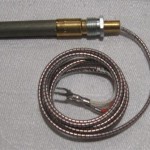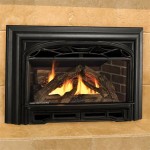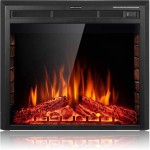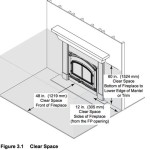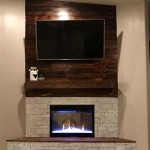Zero Clearance Fireplaces: A Comprehensive Guide
A zero clearance fireplace, also known as a prefabricated fireplace, represents a modern solution to traditional masonry fireplaces. Unlike their brick-and-mortar predecessors, zero clearance units are constructed from steel and come with a pre-engineered firebox and chimney system, enabling installation directly against combustible materials such as wood framing. This feature makes them particularly appealing for home renovations or new builds where space is limited or traditional fireplace construction is impractical.
Advantages of Zero Clearance Fireplaces
Zero clearance fireplaces offer several distinct advantages that make them a popular choice for homeowners:
1. Space-Efficient Installation: The key advantage of zero clearance fireplaces lies in their ability to be installed without needing additional clearance to combustible materials. This allows for installations in tighter spaces, maximizing usable floor area and eliminating the need for extensive framing modifications.
2. Cost-Effective Construction: Compared to traditional masonry fireplaces, zero clearance fireplaces are often more budget-friendly. Their prefabricated nature eliminates the need for specialized labor and materials, resulting in a quicker and less expensive installation process.
3. Enhanced Safety Features: Zero clearance fireplaces are designed with safety as a primary concern. They feature a sealed combustion system that prevents smoke and gases from escaping into the living space. The firebox and chimney system are tested and certified to meet strict safety standards, offering peace of mind for homeowners.
Types of Zero Clearance Fireplaces
Zero clearance fireplaces come in various designs and styles to suit different tastes and needs. Common types include:
1. Direct Vent: Incorporating a sealed combustion system, direct vent fireplaces rely on a vertical vent pipe that expels exhaust directly outside the home. This eliminates the need for a traditional chimney and opens up possibilities for installation in locations where a chimney is not readily available.
2. Vent-Free: As their name suggests, vent-free fireplaces do not require a traditional chimney or vent pipe. They rely on a sealed combustion system and a built-in catalytic converter to minimize emissions. While they offer convenience, vent-free fireplaces are best suited for smaller spaces and require regular maintenance to ensure proper operation and safety.
3. Gas Fireplaces: Gas zero clearance fireplaces offer a clean and efficient option, fueled by natural gas or propane. They come in a wide range of styles, including contemporary, traditional, and modern. Gas fireplaces often feature realistic log sets and flame patterns, providing a visually appealing and cozy ambiance.
4. Wood-Burning Fireplaces: While less common in modern homes, wood-burning zero clearance fireplaces remain a popular choice for those seeking a traditional fire experience. They offer a unique and authentic feel, but require regular maintenance and careful operation to ensure safety and efficiency.
Installation Considerations
While the installation process for zero clearance fireplaces is generally straightforward, it is crucial to consider specific guidelines and requirements:
1. Local Building Codes: Before installing a zero clearance fireplace, it is imperative to consult local building codes and regulations. These codes often specify minimum clearance requirements, ventilation specifications, and other installation guidelines.
2. Professional Installation: While some DIY-inclined homeowners may attempt to install a zero clearance fireplace themselves, it is highly recommended to hire a qualified professional for the installation. Licensed and insured professionals can ensure proper installation, ensuring compliance with codes and maximizing safety.
3. Chimney Inspection: For direct vent and wood-burning zero clearance fireplaces, regular chimney inspections are essential. A certified chimney sweep can assess the condition of the vent pipe and chimney system, ensuring proper airflow and minimizing fire hazards.
4. Maintenance and Cleaning: Depending on the type of zero clearance fireplace, regular maintenance and cleaning are crucial for optimal performance and safety. This may include cleaning the glass doors, removing accumulated soot and ash, and inspecting the combustion system.
Zero clearance fireplaces offer a practical and stylish solution for homeowners seeking a warm and inviting focal point within their homes. By understanding the various aspects of zero clearance fireplaces, including their advantages, types, and installation considerations, homeowners can make informed decisions and enjoy the benefits of a modern, space-efficient fireplace for years to come.

Is A New Zero Clearance Fireplace Right For You Design Styles Sizes

Fireplace Insert Vs Zero Clearance Maple Mtn

Osburn Everest 2 Zero Clearance Wood Stove Fireplace Fireplaces By Cameron

Why You Should Get A Zero Clearance Fireplace Jetmaster Vic

Zero Clearance Wood Fireplace Ventis He350 Best Fireplaces Rockford Chimney

Ventis He250 Zero Clearance Wood Fireplace Chimney
.aspx?strip=all)
Zero Clearance Fireplaces Explained Regency Fireplace S

Top 9 Benefits Of Installing A Zero Clearance Fireplace We Love Fire

Zero Clearance Wood Gas Fireplaces Richmond Va Prefab

Hearthstone Wfp 75 Montgomery 8411 Zero Clearance Wood Burning Fireplace Mazzeo S Stoves Fireplaces
Related Posts



